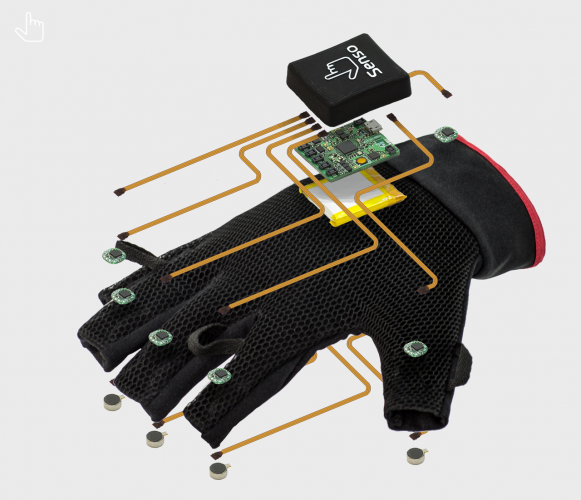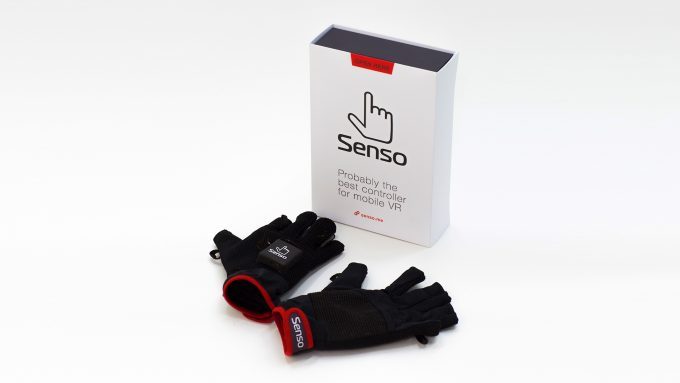Senso is a new virtual reality glove input device that offers per-finger haptic feedback and the ability to simulate differences in temperature – all tracked via a camera-less IMU-based system.
Once a mainstay of fictional virtual reality input, we all once believed that the virtual reality glove would be a dead lock for our chosen input device for an immersive future. However, it turns out that building a device to track hand and finger position in 3D space is somewhat challenging. Nevertheless, we do have a couple of interesting prospects on the horizon, all offering a slightly different take on what users will want from VR glove-based input. Just in the last year we’ve seen the ill fated Control VR, GloveOne from NeuroDigital, PowerClaw and Manus VR.
 You can now add Senso that that ever growing list. 2 years in the making, this new glove (promised the developers) offers a 7 IMU system to offer “absolute 6FOD positional tracking without any standalone solutions” – by which they mean this is no outside-in system. Each glove also packs in vibration motors for each finger and a battery which the
You can now add Senso that that ever growing list. 2 years in the making, this new glove (promised the developers) offers a 7 IMU system to offer “absolute 6FOD positional tracking without any standalone solutions” – by which they mean this is no outside-in system. Each glove also packs in vibration motors for each finger and a battery which the
Now, if I’m honest, there hasn’t yet been an input device we’ve tried which utilises IMU only tracking and orientation which didn’t suffer at some point from immersion breaking drift and inaccuracies. With no absolute positional information, the gathering of incremental orientation via onboard sensors has always come unstuck at some point. This is why consumer motion peripherals from both Oculus and HTC/Valve rely on tracking systems with fixed reference points and external sensors (cameras for Oculus, laser basestation-triggered peripheral sensors for the Vive).
The development team seem adamant their solution is good enough though, “combined with custom software, which gave us an opportunity to achi[e]ve almost zero «drift» in absolute positioning.” The team also claim the glove is able to transmit up to 150 “measurements” per minute to the host device, which at around 2.5 per second seems a little low for a device touting such accuracy. However, this does mean the gloves can survive for up to 10 hours via the onboard battery.
Update: Seems the ‘150 per minute’ quoted in the email from Senso to us was indeed far too low – on checking the website a figure of 150FPS (updates per second) is quoted which frankly make much more sense.
 The device has already been demonstrated at tradeshows as diverse as MWC in Barcelona and GDC in San Francisco, the company is now focusing on finalising a commercial product, one which they aim to bring to market for circa $300 per glove pair.
The device has already been demonstrated at tradeshows as diverse as MWC in Barcelona and GDC in San Francisco, the company is now focusing on finalising a commercial product, one which they aim to bring to market for circa $300 per glove pair.
As ever, we’ll remain open minded until we’ve had our hands in the Senso gloves. We’re as keen as anyone else to see the sci-fi dream of hand tracking peripherals become a reality.






